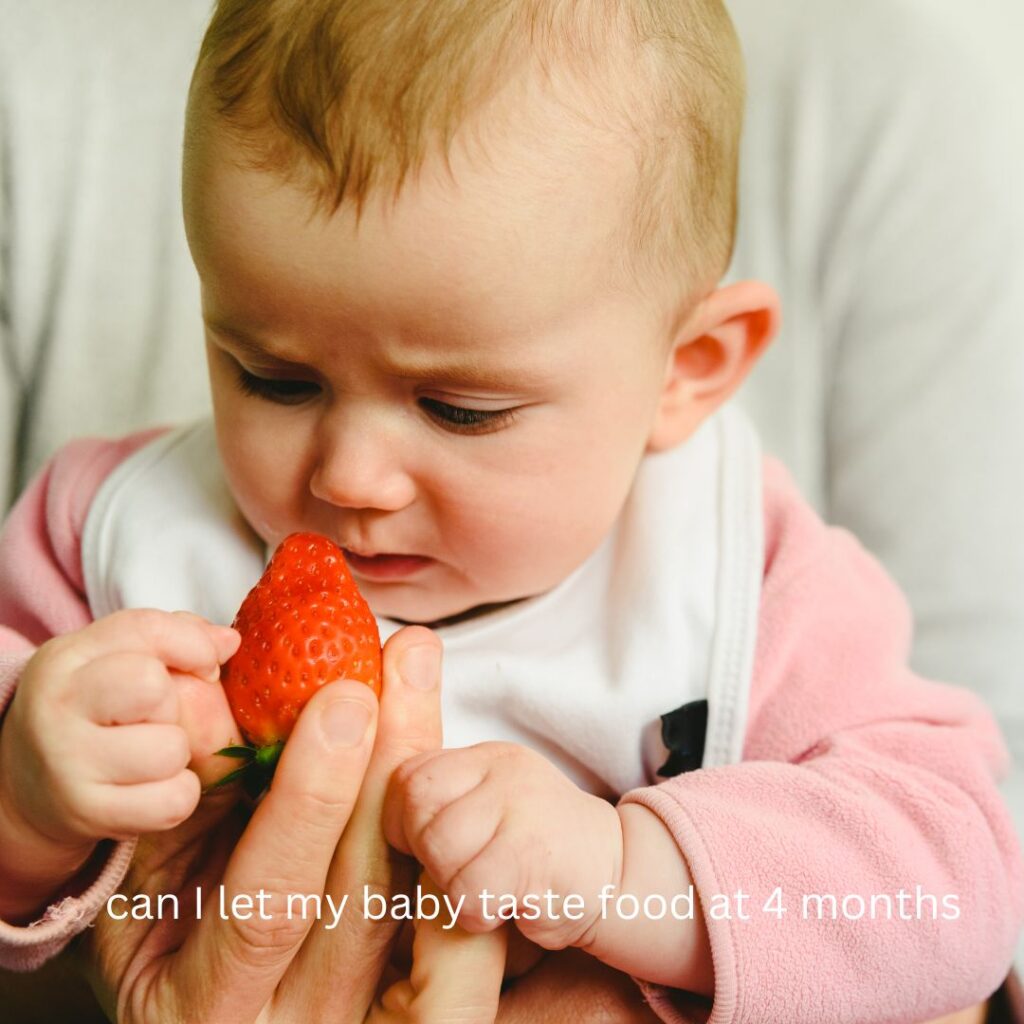Navigating the Introduction of Solid Foods: Exploring the 4-Month Conundrum
The journey of introducing solid foods to your baby is a significant milestone, sparking both excitement and a myriad of questions. One common query that often arises is whether it’s safe to let a baby taste food at 4 months. Let’s delve into this topic with a blend of expert insights and practical considerations to guide you through this crucial stage of your baby’s development.
Understanding Early Feeding Practices:
Pediatricians and healthcare experts generally recommend exclusive breastfeeding or formula feeding for the first six months of a baby’s life. This period is crucial for their growth and development, as breast milk or formula provides the essential nutrients necessary for optimal health.
The 4-Month Dilemma:
Around the 4-month mark, some parents may notice signs of readiness for solid foods in their infants. These signs can include enhanced head control, an increased interest in what others are eating, and the ability to sit with support. While these signs may indicate developmental readiness, it’s essential to approach the introduction of solids with caution and follow professional advice.
Physiological Readiness for Solid Foods:
Babies are born with a reflex called the tongue-thrust reflex, which automatically pushes foreign objects out of their mouths. As they approach the 4 to 6-month age range, this reflex gradually diminishes, making it more feasible for them to swallow and process solid foods.
Expert Recommendations:
The American Academy of Pediatrics (AAP) recommends introducing solid foods around 6 months of age. This is when most babies have developed the necessary motor skills and digestive capabilities to handle different textures and flavors.
Considerations for Early Introduction:
While some parents may choose to introduce single-ingredient, iron-rich baby cereals around 4 months with the guidance of their pediatrician, it’s crucial to recognize the potential risks. Early introduction of solids may lead to an increased risk of allergies and digestive issues.

Signs of Readiness:
To gauge your baby’s readiness for solid foods, observe their developmental milestones. If your baby can hold their head steady, sit with support, and show curiosity about your meals, they might be expressing readiness for the introduction of solids.
Practical Tips for Introducing Solid Foods:
1. Consult Your Pediatrician: Always consult with your pediatrician before introducing solid foods. They can provide personalized advice based on your baby’s individual development and needs.
2. Start with Single Ingredients: When you begin introducing solids, start with single-ingredient, iron-fortified baby cereals. This allows you to monitor your baby’s reaction to different foods.
3. Gradual Progression: Introduce one new food at a time and wait a few days before introducing another. This approach helps identify any potential allergies or sensitivities.
4. Monitor Responses: Pay attention to your baby’s reactions to new foods. Look for signs of allergies, discomfort, or digestive issues, and communicate these observations with your pediatrician.
5. Make it a Positive Experience: Create a positive and enjoyable feeding environment. Use colorful and soft utensils, maintain eye contact, and offer encouragement to make the experience pleasant for your baby.
Conclusion:
In the journey of parenting, decisions about when to introduce solid foods to your baby can be both exciting and challenging. While signs of readiness may appear around the 4-month mark, it’s generally advisable to follow expert recommendations and introduce solids around 6 months. Always consult with your pediatrician, pay attention to your baby’s cues, and celebrate each milestone in their developmental adventure. Remember, every baby is unique, and the key is to approach this transition with love, patience, and a keen awareness of your little one’s individual needs.



